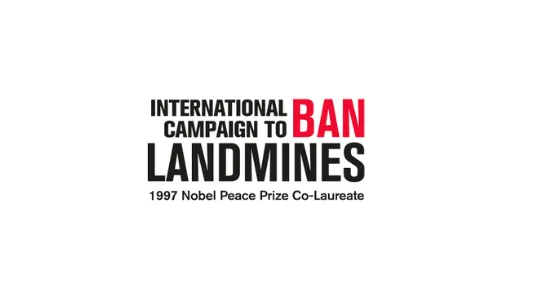More Landmine Casualties Reported as Countries Convene for Ban Treaty Meeting
20 November 2024
International Campaign to Ban Landmines

| (Bangkok, 20 November 2024) Continued landmine use by Myanmar, Russia and other countries that have not prohibited these weapons shows the urgent need for all actors to abide by the norms established by the international treaty banning antipersonnel landmines, said the International Campaign to Ban Landmines today upon releasing its Landmine Monitor 2024 report.
“This flagship report records a shocking number of civilians killed or injured by antipersonnel mines, including children,” said Tamar Gabelnick, Director of the ICBL. “Any use of antipersonnel mines by any actor under any circumstances is unacceptable and must be condemned. All countries that have not yet done so should join the Mine Ban Treaty to turn back this tide and end the suffering caused by these vile weapons.” The Mine Ban Treaty entered into force on 1 March 1999. It prohibits the use, stockpiling, production, and transfer of antipersonnel mines and requires victim assistance, mine clearance, and stockpile destruction. Currently there are 164 States Parties to the treaty; the last countries to join it were Palestine and Sri Lanka in 2017. Landmine Monitor 2024 is being released in advance of the Mine Ban Treaty’s historic Fifth Review Conference, which opens in Siem Reap, Cambodia on November 25. The report details a troubling rise in new landmine casualties. It reports notable progress in the clearance of mine affected land, and a significant increase in global funding for the mine action sector, with an annual total surpassing US$1 billion. The Landmine Monitor Report 2024 documents the alarming use of antipersonnel mines by states that are not party to the Mine Ban Treaty, including increased and ongoing use by Myanmar and continued use by Russia, as well as new use by Iran and North Korea. Russia’s extensive use of antipersonnel mines in Ukraine since the full-scale invasion of the country in 2022 is an unprecedented case of a state outside the treaty deploying landmines within the territory of a State Party. The report records new instances of antipersonnel mine use by government forces and opposition groups in Myanmar; such use has been documented annually since the first Landmine Monitor report was published in 1999. Non-state armed groups used mostly improvised antipersonnel mines in 2023 and 2024 in Colombia, India, Myanmar, Pakistan, and Palestine (Gaza) and increasingly in the Sahel region of Africa. The report recorded at least 5,757 people killed and wounded by landmines and explosive remnants of war worldwide in 2023. In 2023, Myanmar recorded the highest number of annual casualties (1,003) for the first time. Civilians continued to bear the brunt of the harm caused by these weapons, with 84% of recorded casualties being civilians, where the status was known. Children accounted for more than a third of all civilian casualties. However, in many countries resources for programs to assist landmine victims were limited, and in several cases the availability of services decreased. “Behind these disturbing casualty statistics are people trying to rebuild lives after the devastating impacts of mines,” said Eléa Boureux, Project Manager for the Landmine Monitor. “Far too many victims cannot access adequate medical care, rehabilitation services, or other support. During the upcoming Review Conference of the Mine Ban Treaty, the international community should commit to providing appropriate, affordable, inclusive, and accessible services to victims,” she added. Around the world, at least 58 countries and areas are still impacted by landmine contamination. However, a positive development was seen in 2023, as the 33 states with mine clearance obligations under the treaty reported a significant 281.5km² of land cleared during the year, equivalent to an area larger than the United Kingdom. This is the largest area cleared since 2019, when these states committed to make progress in mine clearance “to the fullest extent possible by 2025.” Cambodia and Croatia led the way, accounting for over 209km² or 75% of the total land cleared in 2023. “The increased clearance rates demonstrate what can be achieved with adequate resources, national ownership, and political will,” said Katrin Atkins, Landmine Monitor Editor for contamination, clearance, and risk education. “Cambodia is demonstrating how its determination to clear contaminated land as soon as possible, including through its national contribution of over US$30 million in 2023, can make a difference and save lives.” Landmine Monitor 2024 reports that 12 states, all non-signatories to the Mine Ban Treaty, remain on the Monitor’s list of those who develop, produce, or acquire antipersonnel mines, including India, Iran, Myanmar, Pakistan, Russia, and South Korea. The 2024 report shows a historic increase in global funding for mine action, surpassing $1 billion for the first time. This is a 12% increase ($112.1 million) from 2022, largely driven by support for Ukraine, which received US$308.1 million in international assistance in 2023. However, the report raises concerns over declining funding for clearance in other heavily affected countries, including Afghanistan and Yemen, where healthcare and rehabilitation services also remain severely underfunded. For more information or to schedule an interview, contact:
|
Announcements
04 April 2025
Myanmar: Human Rights Council condemns the junta, responds to the earthquake, and calls to end sale and supply of arms and jet fuel
13 March 2025
Job Vacancy: Administrative and Finance Assistant
28 February 2025
Open letter: Removal of the membership of the dis-accredited Myanmar National Human Rights Commission from the Southeast Asia National Human Rights Institution Forum
25 February 2025
သတင်းထုတ်ပြန်ကြေညာချက် – တရားမျှတမှုဆီရှေးရှုလျက် အာဂျင်တီးနားတရားရုံး၏ ဖမ်းဝရမ်းထုတ်ပြန်မှုကို ကြိုဆိုထောက်ခံ
25 February 2025
Press Statement: Argentine Court’s arrest warrants are welcome progress towards justice

Progressive Voice is a participatory rights-based policy research and advocacy organization rooted in civil society, that maintains strong networks and relationships with grassroots organizations and community-based organizations throughout Myanmar. It acts as a bridge to the international community and international policymakers by amplifying voices from the ground, and advocating for a rights-based policy narrative.